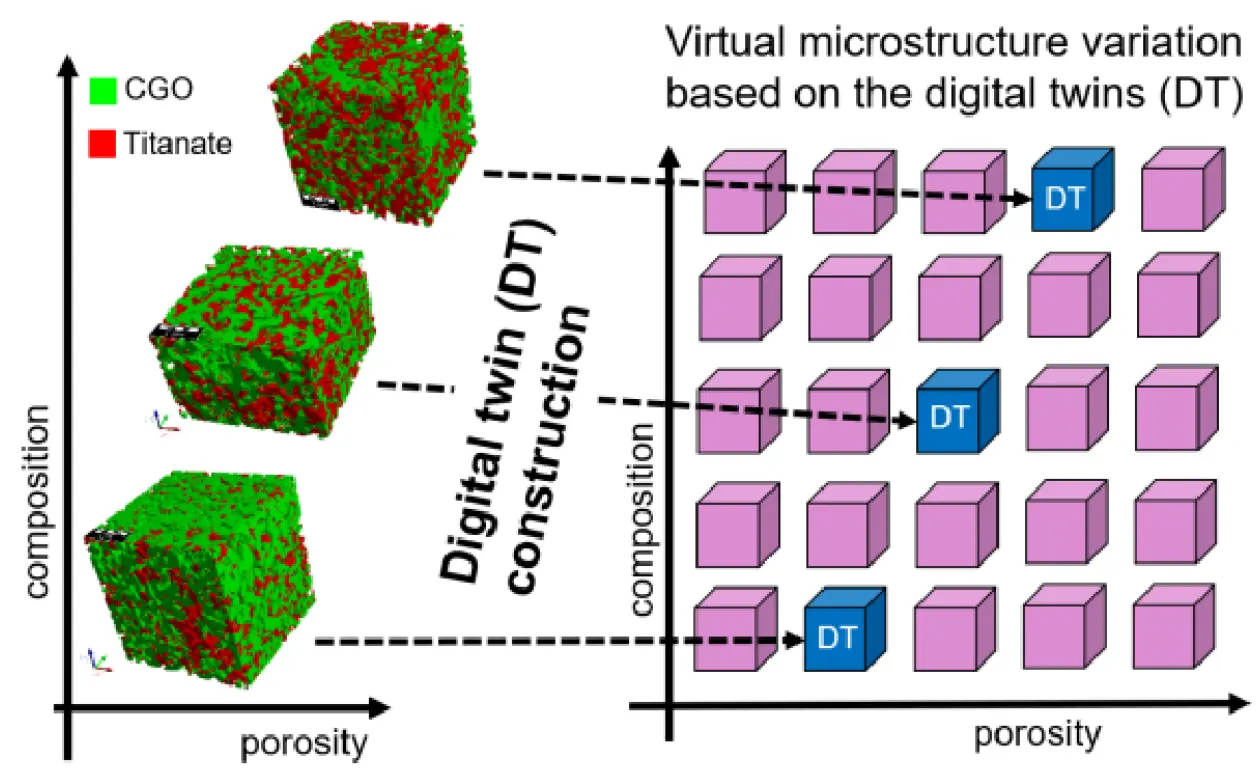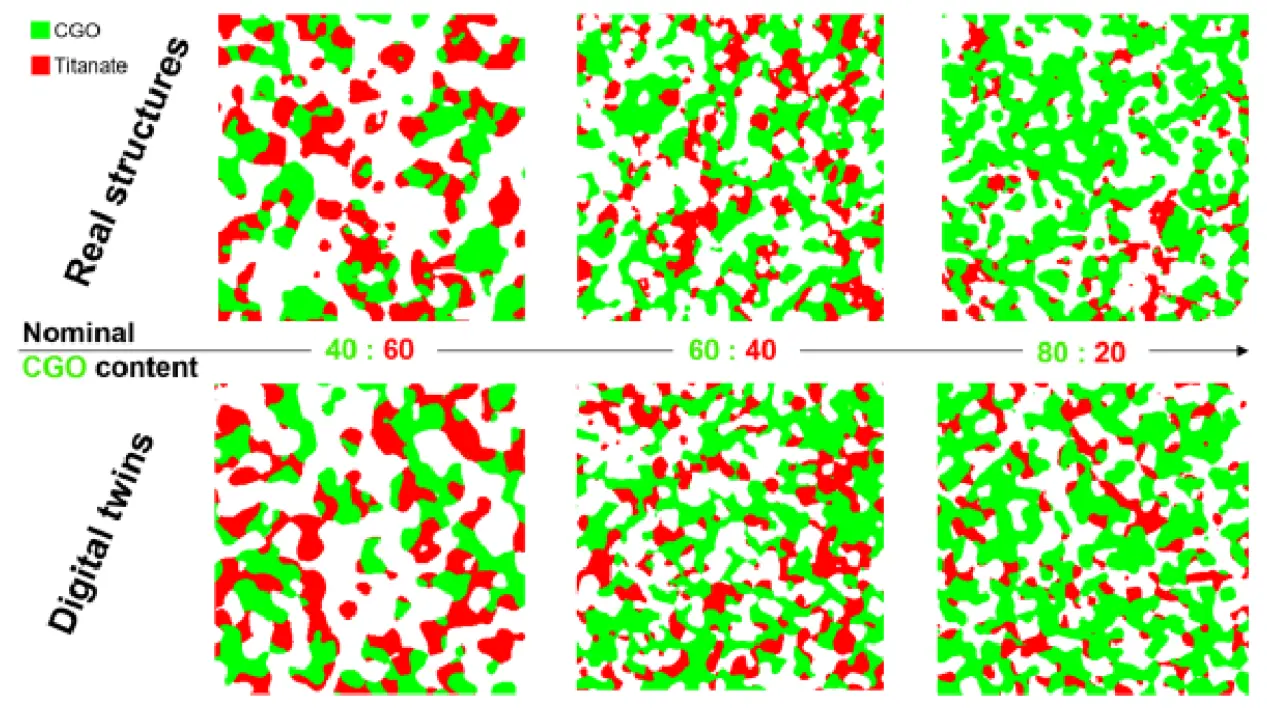Model Based Optimization of MIEC SOFC Anodes
Costs and lifetime are currently the limiting factors for the broader use of solid oxide fuel cells (SOFC) with natural gas for combined heat and power. Therefore, a systematic optimization of materials and cell concepts is needed to increase lifetime and efficiency. In our approach, we build on digital materials design (DMD), whereby methods for multi-physics simulation, 3D microstructure characterization (tomography data), and electrochemical impedance spectroscopy (EIS) are combined. Based on the DMD approach, the relations between material properties, microstructure, cell design, and performance are established on a quantitative level. This approach helps to define design guidelines for optimized MIEC electrodes and accelerates the innovation cycle for future SOFC devices.
For the next generation of solid oxide fuel cells (SOFC), the requirements of the market call for higher efficiency, longer lifetime, and lower system
costs. In order to meet these requirements, we elaborate on new anode concepts, which are based on mixed ionic and electronic conductors (MIEC) like doped ceria and titanate materials. However, complex physico-chemical processes are involved including the transport of gas in the pores, transport of ions and electrons in the solid phases, fuel oxidation reaction on the surface of ceria, etc. Hence, there are numerous conflicting requirements, which complicate the development process. Therefore, sophisticated methods including mathematical models as well as experimental methods are needed for the systematic optimization of the system.
In SOFC research, electrochemical impedance spectroscopy (EIS) is an essential characterization tool, which serves as a basis for materials optimization on the electrode, cell, and stack levels. Multiphysics simulation models developed at ICP with AC and DC modes, enable the simulation of the EIS spectra as well as the DC behavior during normal cell operation. Therewith, a basic understanding of the complex physico-chemical processes and an appropriate interpretation of the EIS spectra are achieved.
With the digital materials design (DMD) approach, the effect of microstructure variation on cell performance can be assessed. Therefore, the real microstructures are captured using FIB tomography for a small number of fabricated cells with different compositions and porosities. Stochastic digital twin models with matching microstructure properties are then constructed for each real structure as shown
in Fig. 1 (right) and Fig. 2. On that basis, the microstructure can be varied for a large parameter space in a realistic way. Microstructure analysis enables quantifying morphological characteristics (tortuosity, porosity, etc) and the associated transport properties.
The multiphysics simulation model is then used to predict the impact of the microstructure variation on the cell performance.
By establishing the relationship between material properties, microstructure, cell design, and performance, guidelines for a new anode materials design can be deduced. This allows for faster and more systematic development of new SOFC electrodes.

